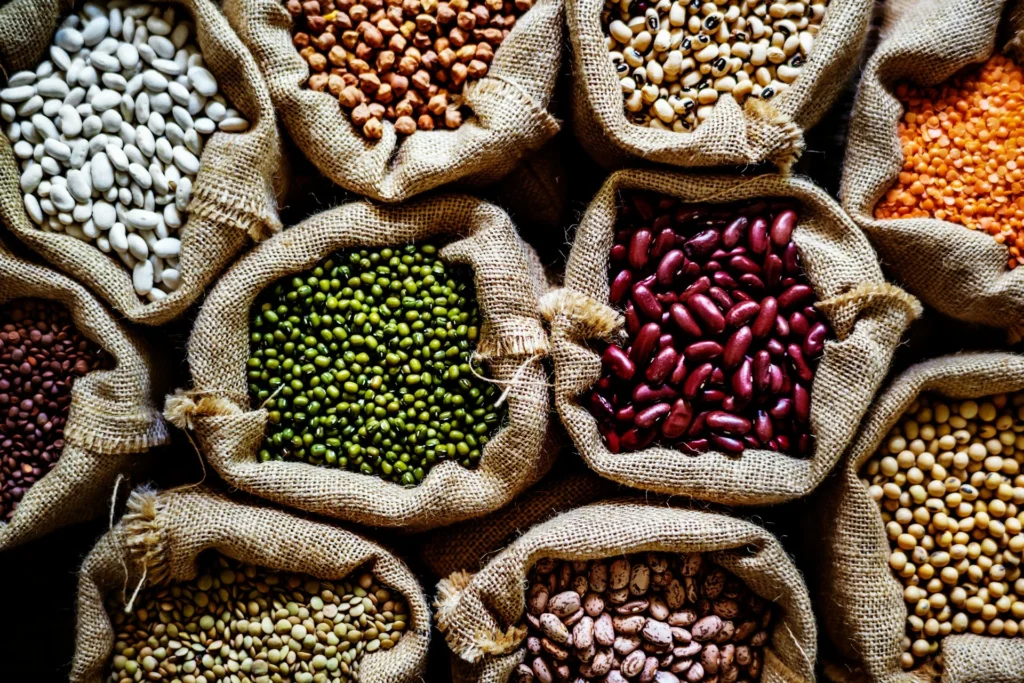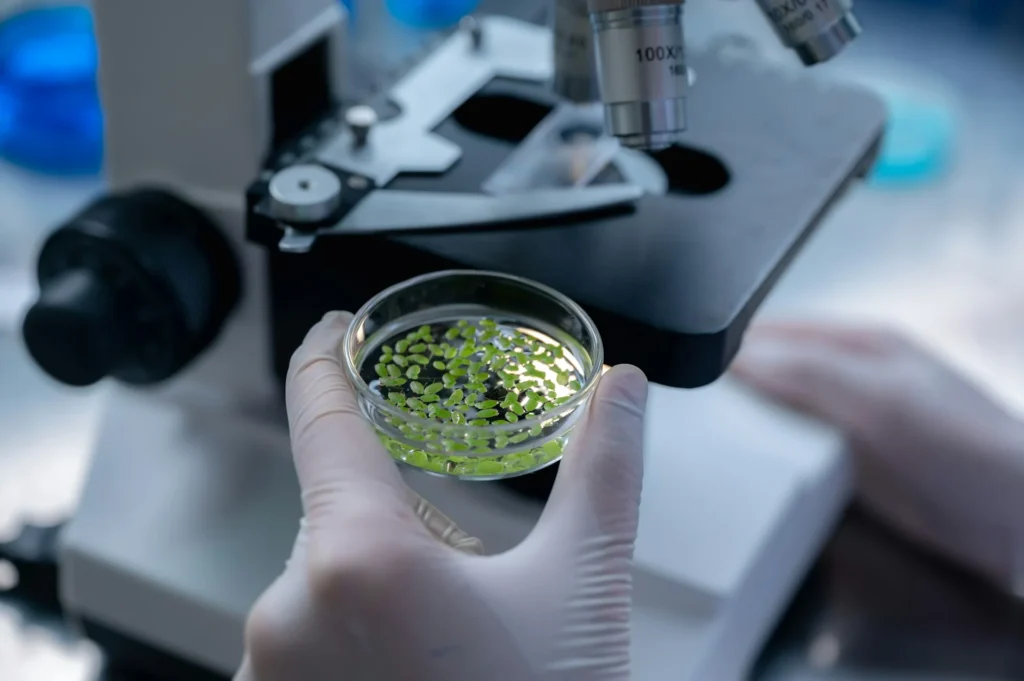Legumes are the most protein-rich plant foods. They include all kinds of beans (borlotti, red, cannellini, Spanish white, and other varieties) and lentils (different varieties depending on the region), chickpeas, chickling peas, fava beans, lupins, green beans, peas, yellow soybeans, azuki beans (called “red soybeans”), and mung beans (called “green soybeans”).
Products derived from legumes are flours (chickpea, pea and soybean flours are commercially available) and soybean derivatives: milk and yogurt, tofu, tempeh and restructured vegetable protein (this is dehydrated soy: granular, in chunks or in “steaks”).
Plant protein content is similar to that of meat: in legumes, protein provides about 35 percent of total energy on average. Although their sulfur amino acid content is limited, this is not a problem because these amino acids are largely contained in other plant food groups, especially cereals and nuts, all of which should be consumed regularly in a healthy diet. In traditional cooking, legumes are often consumed together with grains in the same dish, but in reality it is not necessary to consume them in the same meal to achieve dietary protein adequacy.
Consumption of plant protein appears beneficial for gut health, as it promotes the development of a diverse and healthy population of gut bacteria and could reduce the risk of obesity and other chronic diseases including type 2 diabetes, promote healthy aging and reduced risk of frailty in the elderly, as well as reduce mortality from all causes and mortality from cardiovascular disease.
The main component of legumes, however, is not protein but complex carbohydrates, which also due to their fiber content can be absorbed slowly by the intestines without adversely affecting blood sugar. In addition, legumes contain B vitamins (riboflavin, niacin, thiamine, folic acid) and beta-carotene, iron, magnesium, potassium, calcium, and zinc. They are also good sources of phytochemicals, such as phytoestrogens, saponins and tannins. All legumes contain little fat, except soybeans, which are rich in polyunsaturated fatty acids-including omega-3 fatty acids-and contain no cholesterol.
Consumption of legumes appears to be protective of health: in various meta-analyses, their consumption has been associated with reduced risk of cardiovascular disease, stroke, all-cause mortality, type 2 diabetes, hypertension, and obesity.
It should be emphasized that legumes should also include soybeans, which contain phytoestrogens (the isoflavones genistein and daidzein), important biocompounds with antioxidant properties and with a structure similar to the human hormone 17-β estradiol. Among the various false myths surrounding plant foods, a deep-rooted one concerns precisely the isoflavone content of soy, because these compounds have long been considered endocrine disruptors, with negative influences on male fertility and cancer risk in women. In contrast, a meta-analysis of clinical studies has shown that soy protein and isoflavones are unable to affect testosterone, estradiol, estrone, and sex hormone-binding globulin in men, and another recent meta-analysis concluded that consumption of soy isoflavones may even reduce the risk of breast cancer in pre- and postmenopausal women.
Theyhave also been reported to be beneficial in other conditions such as endometriosis, menopausal symptoms, skin aging, osteoporosis, cardiovascular, neurodegenerative, immune, and metabolic diseases
In conclusion, legumes emerge as a food whose consumption should be recommended in all types of diets. Indeed, they can contribute to the nutritional adequacy of a plant-based diet, but more importantly they can be a substitute for unhealthy protein sources, such as animal foods, even in diets that are not exclusively plant-based.







